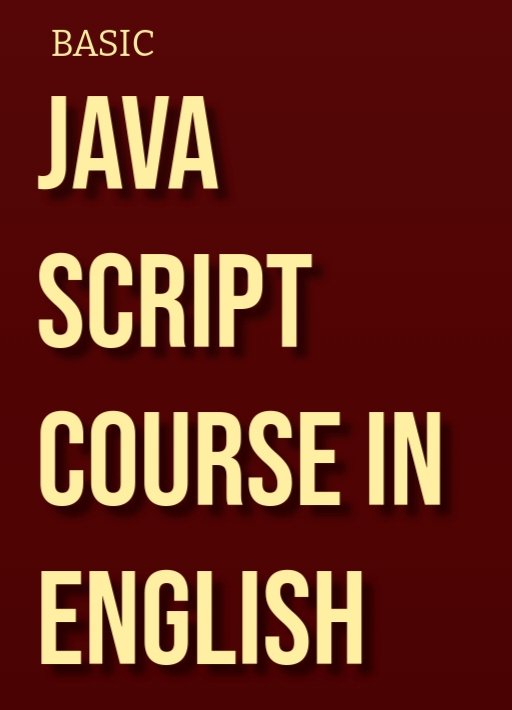java script tutorials in english pdf ebook
Module 1: Introduction to JavaScript
1.What is JavaScript?
o JavaScript Review
o History and evolution
o Why learn JavaScript?
2. Setting up the environment
o Installing a code editor (VS Code, Sublime, etc.)
o Setting up a browser environment
o Introduction to developer tools in browsers
3. Your First JavaScript Program
o Writing your first “Hello World” script
o Embedding JavaScript into HTML
o JavaScript console and basic commands
Module 2: JavaScript Basics
1. JavaScript Syntax
o Variables (let, const, var)
o Data types (strings, numbers, booleans, etc.)
o Operators (arithmetic, assignment, comparison,
logical)
2. Control Flow
o Conditional statements (if, else, switch)
o Loops (for, while, do-while)
o Breaking out of loops and using continue
3.Functions
3
o Defining functions
o Function parameters and return values
o Arrow functions vs regular functions
o Callback functions
Module 3: Data Structures in JavaScript
1. Arrays
o Creating arrays
o Accessing and modifying array elements
o Array methods (map, filter, reduce, etc.)
2.Objects
o Object properties and methods
o Creating and modifying objects
o Nested objects
3.Working with JSON
o JSON format
o Parsing and converting JSON
o Common use cases of JSON
Module 4: DOM Manipulation
1.What is the DOM?
o Document Object Model explained
o Accessing and manipulating HTML elements
with JavaScript
2.Methods of DOM
o Querying DOM elements (getElementById,
querySelector, etc.)
o Modifying HTML content and attributes
o Event handling (click, hover, keypress, etc.)
3. Creating Dynamic Web Pages
o Creating and removing HTML elements
o Changing styles dynamically
o Implementing user interactions
Module 5: JavaScript Events
1.Introduction to Events
o Understanding events in the browser
o Common events (click, mouseover, submit, etc.)
2.Event Listeners
o Adding event listeners to elements
o Preventing default actions
o Event bubbling and capturing
3.Interactive Web Applications
o Creating interactive features using event-driven
programming
Module 6: Asynchronous JavaScript
1.Introduction to Asynchronous JavaScript
o Synchronous vs asynchronous programming
o Understanding callbacks and promises
2.Working with Promises
o Creating and using promises
o Chaining promises
o Error handling in promises
5
3. Async/Await
o Introduction to async/await syntax
o Converting promises into async/await
o Error handling in async functions
Module 7: JavaScript ES6+ Features
1. Arrow Functions
o Syntax and usage of arrow functions
o Differences between arrow and regular functions
2.Template Literals
o Using template literals for string formatting
o Multi-line strings and expression interpolation
3. Destructuring
o Array and object destructuring
o Practical applications of destructuring
4.Modules
o Importing and exporting JavaScript modules
o Organizing code using modules
Module 8: JavaScript for Web APIs
1.Introduction to APIs
o What are APIs, and why use them?
o Making HTTP requests using fetch()
2.Working with API Data
o Fetching data from APIs
o Displaying data dynamically on web pages
6
o Error handling in API calls
3.Practical Projects
o Building a weather app using an API
o Creating a to-do list with persistent storage
Module 9: Advanced JavaScript Concepts
1. Closures and scope
o Understanding scope in JavaScript
o What are closures, and why are they important?
2. JavaScript Prototypes
o Understanding the prototype chain
o Using inheritance in JavaScript
3.Working with Classes
o ES6
o Creating objects using classes
o Inheritance and extending classes
Module 10: Building Projects with JavaScript
1.Form Validation
o Creating interactive forms with validation
o Validating inputs and showing error messages
2. JavaScript Games
o Building a simple game (eg, Tic-Tac-Toe or
Snake)
o Implementing game logic using JavaScript
3.Final Project
7
o Combining concepts learned to build a full-
fledged web application
Bonus: JavaScript Best Practices
1. Code Optimization and Performance
o Writing efficient JavaScript code
o Debugging and testing JavaScript code
2. Security Considerations
o Handling user input securely
o Preventing common vulnerabilities (XSS, CSRF)
Conclusion
Recap of what was learned
Resources for further learning





